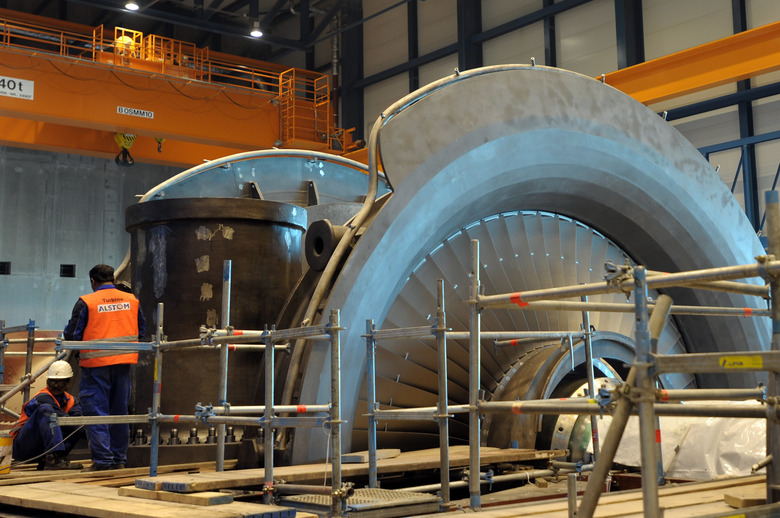The Effects Of Silica On Steam Turbines
Steam turbines are machines that convert the heat energy of steam from a water boiler into rotary motion. Their interior consists of a series of blades that capture the steam and provide a rotational force. As it rotates within a magnetic field, the turbine generates electric power. This principle constitutes 80 percent of the means of electric power generation worldwide. The purity of steam that passes through the turbine is crucial to its function and efficiency. Mineral and organic contaminants are present in the reservoir and river water that provides the steam source. These can be silica, detergents from urban waste or salts such as sodium chloride and sodium sulfate.
Silica
Silica
Silicon is the world's most abundant element after oxygen. It does not occur as a sole element but in compounds with oxygen, forming silicon dioxide or silica, and iron, potassium, aluminum, magnesium and calcium. The natural waters used in power stations contain large amounts of dissolved silicates.
Carryover
Carryover
Carryover is any contaminant that leaves the power station boiler within the steam that flows into the turbine. Silica is the most common contaminant. It volatilizes — becomes a gas — at the high pressures and temperatures within the boiler. It also forms a colloidal solution — a stable suspension of silica particles — with water.
Deposits
Deposits
Steam cools as it moves through the turbine. At these lower temperatures, silica precipitates onto the turbine blades where it accumulates as a glassy deposit. Its removal requires chemical treatment.
Pressure Decrease
Pressure Decrease
As the silica deposits accumulate on the turbine blades, they cause a pressure drop within the turbine itself. The deposits are of random thickness and cause balance and vibration problems inside the turbine.
Corrosion
Corrosion
Corrosion is a chemical attack that causes a loss of metal in the turbine blade. Most turbine blades are steel. Even high grade steels oxidize partly at the turbine temperatures and react with silica. If left untreated, such corrosion will rupture the turbine.
Capacity Reduction
Capacity Reduction
Silica deposits on the blades and other elements of turbine restrict steam flow to it from the boiler. This results in a loss of output from the turbine and a reduction in the turbine's electricity generation capacity.
Cite This Article
MLA
Kielmas, Maria. "The Effects Of Silica On Steam Turbines" sciencing.com, https://www.sciencing.com/info-10002786-effects-silica-steam-turbines/. 9 January 2018.
APA
Kielmas, Maria. (2018, January 9). The Effects Of Silica On Steam Turbines. sciencing.com. Retrieved from https://www.sciencing.com/info-10002786-effects-silica-steam-turbines/
Chicago
Kielmas, Maria. The Effects Of Silica On Steam Turbines last modified March 24, 2022. https://www.sciencing.com/info-10002786-effects-silica-steam-turbines/
